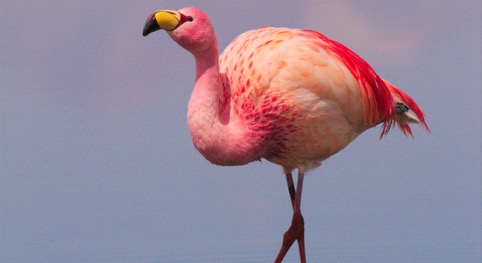Researchers from CMEC might have found the answer to old biodiversity mystery
Research from the former DNRF-funded center CMEC sheds new light on the old mystery of how biodiversity arises. The reason why some areas of the globe have a particularly large number of animal species must be, according to the researchers, in the species’ evolutionary adaptation and spread within specific habitats. The result is based on research conducted under the DNRF’s 10-year grant period to CMEC from 2009-2019. The study, conducted in collaboration with the Smithsonian Institution in the USA, was recently published in the scientific journal Nature Communications.

Scientists around the world have long debated the cause of the uneven distribution of biodiversity in the world. While some believe that species’ richness primarily reflects how many new species are emerging and that species are spreading randomly within the areas concerned, others believe that the uneven distribution of biodiversity is due to high temperature and heavy rainfall, which increase plant growth and cause species to coexist.
In a new study, researchers from the Center for Macroecology, Evolution and Climate (CMEC) at the University of Copenhagen have presented a third explanation. Researchers from the center, in collaboration with the Smithsonian Institution in the US, have found that the answer may be in the evolutionary adaptability of animals. The research was supported by the DNRF, as CMEC had a grant from the foundation from 2009-2019.
“Biologists have discussed this problem for more than a hundred years and have put forward all sorts of likely explanations – but we have yet to find the final answer. With this study, we can say that species’ richness is not just a mechanical consequence of a contemporary climate with high ambient energy in the form of solar radiation and plant growth. Our research shows that the cause underlying species’ richness to a large extent should be found in evolution. Animal species have their evolutionary niches that control how they disperse,” said Michael K. Borregaard, associate professor at CMEC and lead author behind the study.
A clear pattern
Together with research colleague Carsten Rahbek, who is the head of center at CMEC, and American research colleague Gary Graves from the Smithsonian Institution, Borregaard investigated the prevalence of three different classes of vertebrates in South America, including toads, mammals, and birds. To do this, the researchers developed new models to calculate and explain species’ richness in animal species.
The models examine the extent to which the species from each animal class and in a defined area are present in surrounding areas. In this way, researchers can measure how the composition of species’ communities is changing across the continent and get an idea of how they have spread over time.
“When we look at the distribution of species, we see a clear pattern. And this same pattern emerges regardless of whether we look at birds, amphibians or mammals, which are entirely distinct groups. The pattern of shared species composition very closely follows the boundaries of South America’s various natural habitats or vegetation biomes. This confirms our hypothesis that species’ richness is explained by how animals’ natural niches limit how they disperse across the continent over evolutionary time. In this way, historical evolutionary adaptations to various types of vegetation will play a key role in biodiversity,” said Borregaard.
As part of the study, researchers have done a massive mapping and divided the entire South American continent into areas 110 x 110 kilometers. Using the new models, the researchers in each area have investigated the occurrence of all species in the three classes and recorded 2265 amphibian species, 1146 mammal species, and 2869 bird species, respectively.
“We have chosen South America because it is the world’s largest hotspot for biodiversity. And the contrasts between the vegetation biomes are huge. There are pretty distinct boundaries between the Amazon, the Cerrado savannah and the Andes mountains because they are separate natural vegetation types,” said Borregaard. He added:
“Right now, we have a worldwide crisis, where we are losing species at an elevated rate. If we are to solve that crisis, we need to know what causes biodiversity. Without that knowledge, it will be difficult to protect the richness of species.”
Find the scientific publication from CMEC in Nature Communications here
